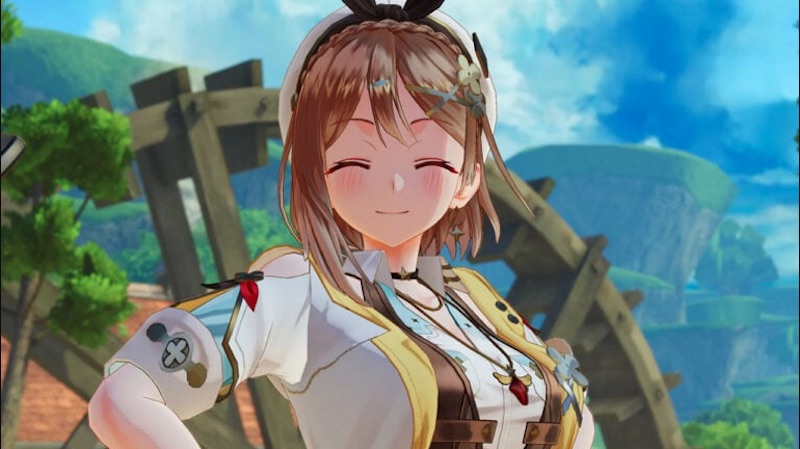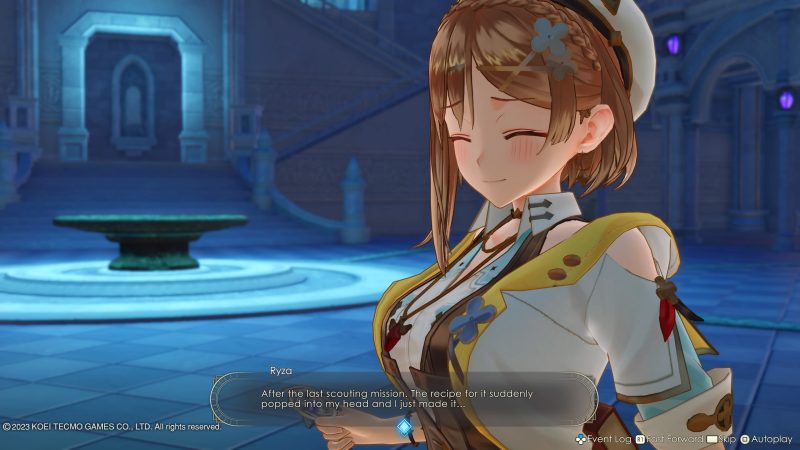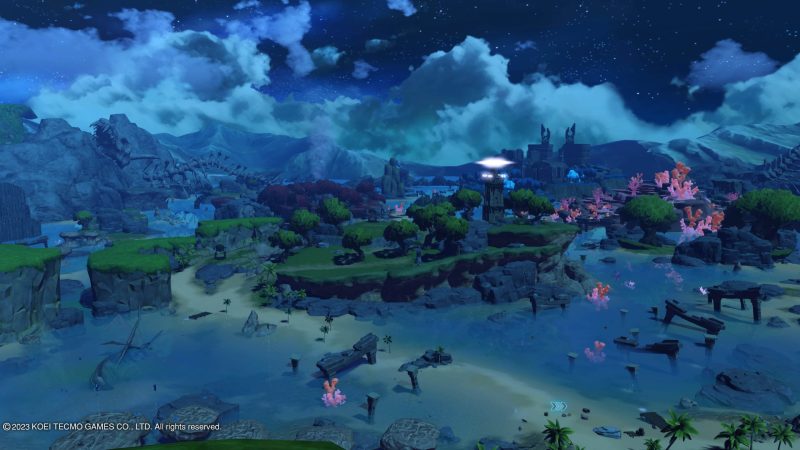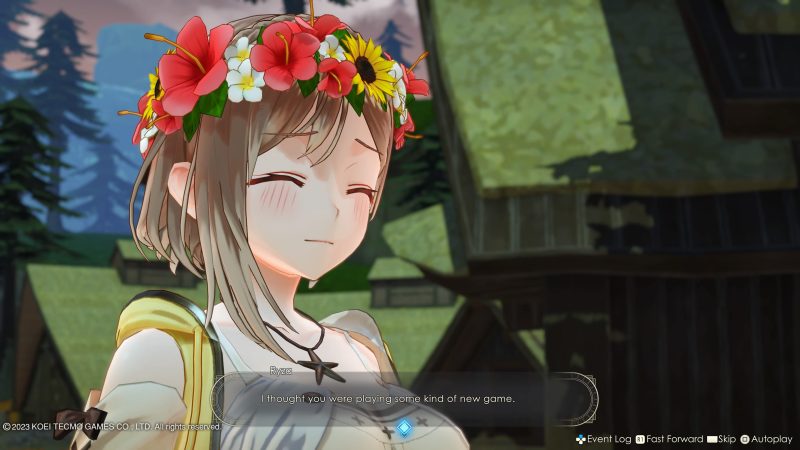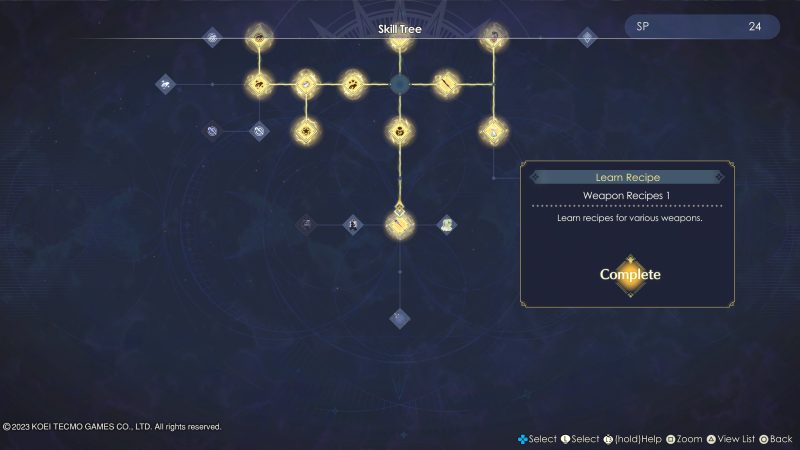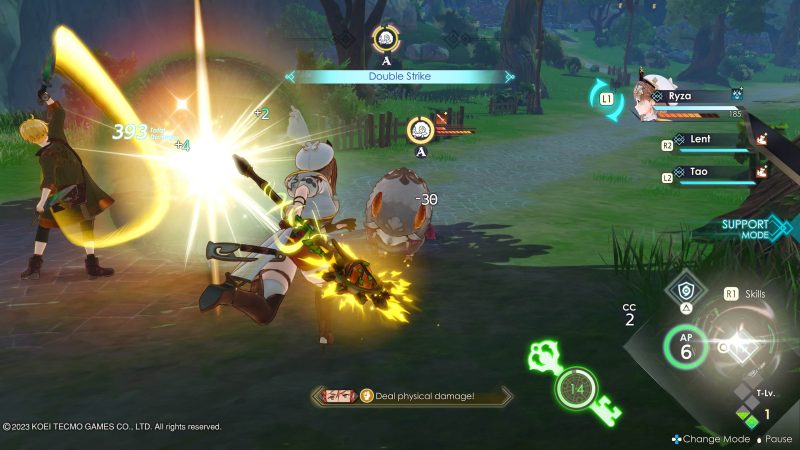Atelier Ryza 3: Alchemist Of The End And The Secret Key Review (PS5) – Not since the PS2 has another protagonist in the Atelier franchise garnered 3 titles. Ryza arguably became the face of the franchise, just because she helped put the Atelier games in front of more players.
With that in mind, she deserves a grand finale all her own. While this final game doesn’t quite perfectly close her act, Atelier Ryza 3: Alchemist of The End And The Secret Key polishes a formula that the franchise will undoubtedly use from here on out.
Atelier Ryza 3: Alchemist Of The End And The Secret Key Review (PS5) – Bidding Farewell To Ryza With A Strong Franchise Entry
Ryza has come a long way from the first game. Instead of fighting to prove the worth of her alchemy, she fulfills all kinds of different orders and roles through her specific skills. She’s incredibly busy, even when her longtime friends, Bos and Tao return from school for the summer.
Still, any length of time with Ryza can’t pass by without some dangerous adventure popping up. This time, some islands (yes, islands) appear right off the coast of Kurken Island. Along with it comes these voices and flashes that just appear in Ryza’s head, coaxing her to her cauldron.
Once there, she muses a recipe for a mysterious key. The creation of this key allows Ryza to use the energy from different regions to create other keys to unlock region-specific secrets as well as temporarily power up characters in battle.
While this is Ryza’s third game, this title attempts to make this entry a workable starting point for newcomers by providing an introductory video that recaps the previous two games. This clip does a decent wiki-level job of describing the events leading to this game, but, as expected, much of the nuance for the story and characters does not come through.
It’s okay to start here, but bear in mind that you will miss out on a great deal of the charm that makes Ryza so unique and likable when compared to the other Atelier main characters.
Across the life of the game, Ryza gets to explore four different regions, two from prior games and two new regions. To boot, these regions are each made into their own map, letting you explore without having to jump between subregions or see loading screens all the time.
Alongside the standard fair of main quests and sub quests are Random Event Quests that pop up as you run around each map. These don’t demand more than providing local ingredients or defeating enemies, but they provide money, experience, and Skill Points in endless supply.
With all of this extra stuff to do, exploration starts to take a toll on progression because, like with most open world games, you end up focusing on other things instead of the task at hand. To boot, you get several ways to navigate the maps, like swinging across vines or riding zip lines.
Thankfully, the main questline scenarios are interesting enough on their own to keep you moving forward.
Ending A Series
One other consequence of this expansive world hits Ryza directly. She’s inquisitive and motivated and hungry for knowledge, which all play into why this series is so much more popular than the previous Atelier entries. While she’s still inquisitive, she comes across half the time more as a plot device than a blindly ambitious alchemist.
Her ambition is what makes her charming and likable. It’s still there in this game, but it often takes a backseat.
Instead, the other characters usually take opportunities to describe Ryza as a magnet for adventure or how she’s so deeply motivated to learn more alchemy that she forgets other things. It’s no longer her expressing these traits.
Her personality is now far too often being emphasized by others rather than the game just letting her be herself. This is something I commonly see in anime. Thankfully, the longer the game progresses, the more opportunities Ryza gets to be herself. Generally speaking, however, that only happens when the plot doesn’t need moving.
Alchemic Refinement
The dev team made some new creative decisions this time around. By far the best one is overall character animations. Instead of the completely statuesque character models, all characters now emote more along with more animated movement. The dev team must have switched to a new game engine for this game, and the game is all the better for it.
To highlight this, much of the game’s main narrative plays out through more engaging cutscenes that showcase the new engine’s capabilities. Ryza still gets into the normal chat bubble interactions like practically all RPGs, but the added cutscenes up the presentation value a great deal, since they use in-game character models to play them out.
How you develop also offers some freedom without letting you go deep into it too quickly. Expanding your gathering basket and increasing the quality of the items you collect come through a map of skills simply called a Skill Tree. Crafting items and completing random quests grant points for this tree, but most nodes require large amounts of points.
If you want, you can farm like crazy to unlock far more than you should or just unlock as you progress in the game. The choice is nice but doesn’t let you just get access to everything right away. This makes a good balance.
Another great development choice is how they sped up gathering speed. Harvesting takes a quick swing and you’re off. You don’t have to sit through a long animation anymore. To boot, if you just have to grab a flower or rock, you don’t even have to stop. You can just run through a bunch of them and mash Cross.
This funnels the game’s focus more into crafting and exploration while still asking you to gather your own materials.
This also aligns with how the game lets you choose between manually controlling the game’s systems or letting the game manage handle the dirty work. First, if you want the game to craft an ingredient, just hit R1 and the game asks you if you want a high or low quality outcome. It even shows you what goes into the ingredient, albeit at high speeds, just in case you wish to learn by example.
In contrast, if you want to take the time to input ingredients to get the stats and skills you want, you still can.
The Throes of Combat
In the same vein, Ryza 3 offers one thing that separates itself from both the entire Atelier franchise and the rest of the Ryza series. Combat gives you a similar level of freedom that you get with everything else in this game.
You can either run the game on Easy Mode and play only as one character, or you can play on Very Hard and control all three combatants along the way. If you play on Very Hard, you NEED to control all three characters.
With all Ryza titles, the game gives you free reign to jump between characters and control their actions. However, unlike the first Ryza, for instance, you no longer see a turn gauge to indicate who attacks when.
Now, each participant has a circle gauge that fills up before they can attack. The caveat to this is that you only see the targeted enemy’s gauge and the gauge of the character you control in that moment.
This leaves you needing to jump between all characters if you intend to play on harder difficulties. All attacks are devastating, so you need to trigger blocks for everyone when necessary. You also need to chain attacks with each combatant if you hope to break the enemy’s stance, which is indicated by a bar underneath their health bar.
A Different Choice or Two
With those generalized details, you already see that combat asks a great deal of you if you jump into the deep end. My one problem with Ryza’s combat is that you don’t see any universal turn indicator, as mentioned above in the first Ryza game. Constantly jumping back and forth just to see what you need to do requires much more effort than what you get from winning a fight.
An argument can be made that the combat extremes play into the way the game provides the player with options on all fronts. Equally so, the level of demand in combat does not parallel the levels of demand in any of the game’s other systems.
Something to indicate combatants’ turn order would have made a world of difference. I only bring in this hypothetical just because it was a previous game’s feature the dev team excluded this time around.
Fights are ultimately more frenetic and for the better, but the inclusion of one previous feature would have made a world of difference in general. When you manage to make the timing work, it feels pretty good, but trying to feel your way through it just doesn’t offer something rewarding long-term.
Farewell, Ryza
While not perfect, Atelier Ryza 3 Alchemist of The End And The Secret Key brings a good ending for the biggest Atelier series to date. There’s room to improve the combat formula, and the narrative could have easily let Ryza be herself more often.
Still, Ryza 3 puts together something fun and easily sets the bar for future Atelier titles.
Atelier Ryza 3: Alchemist Of The End And The Secret Key is available on PS5 and PS4 on March 24, 2023.
Review code generously provided by publisher.
